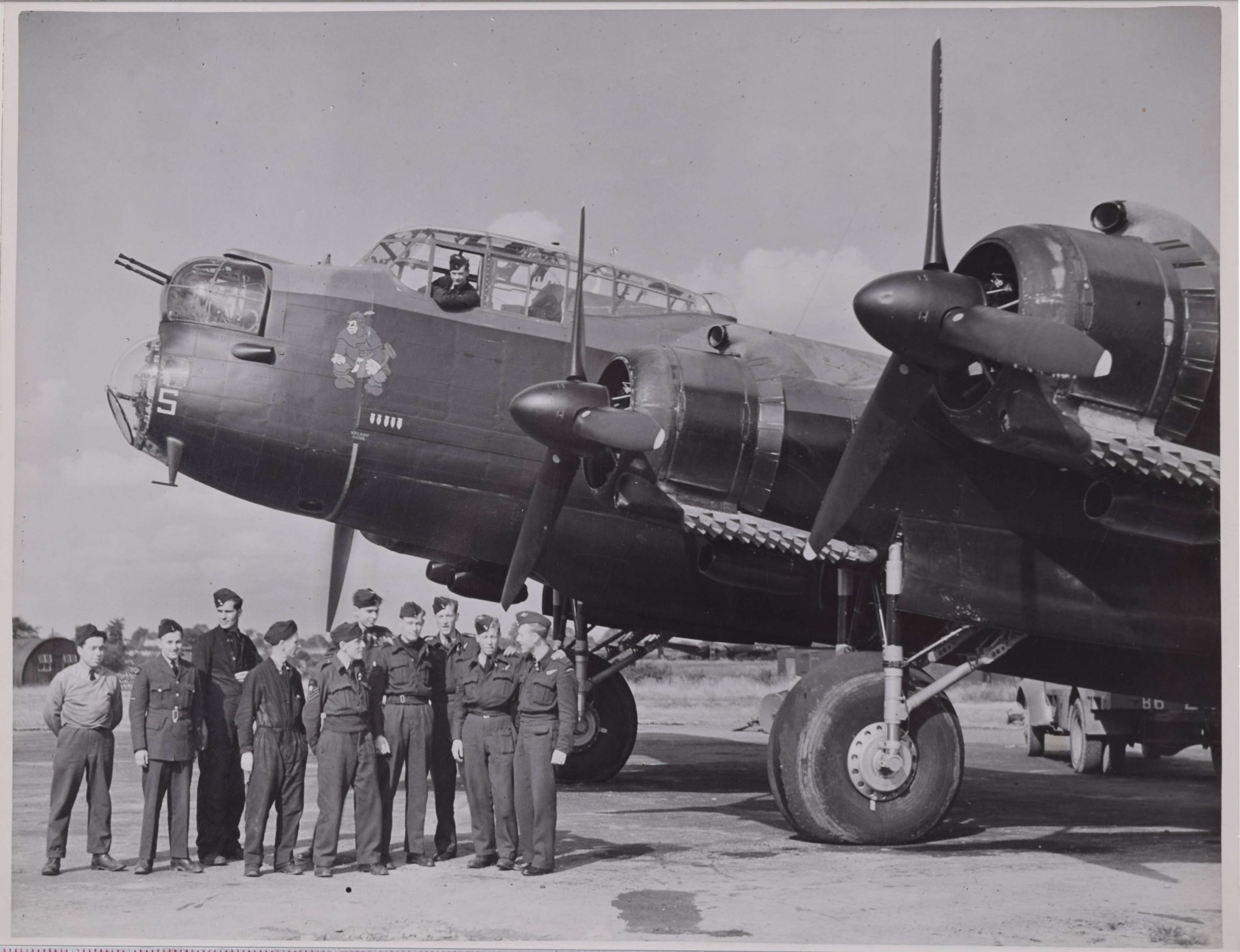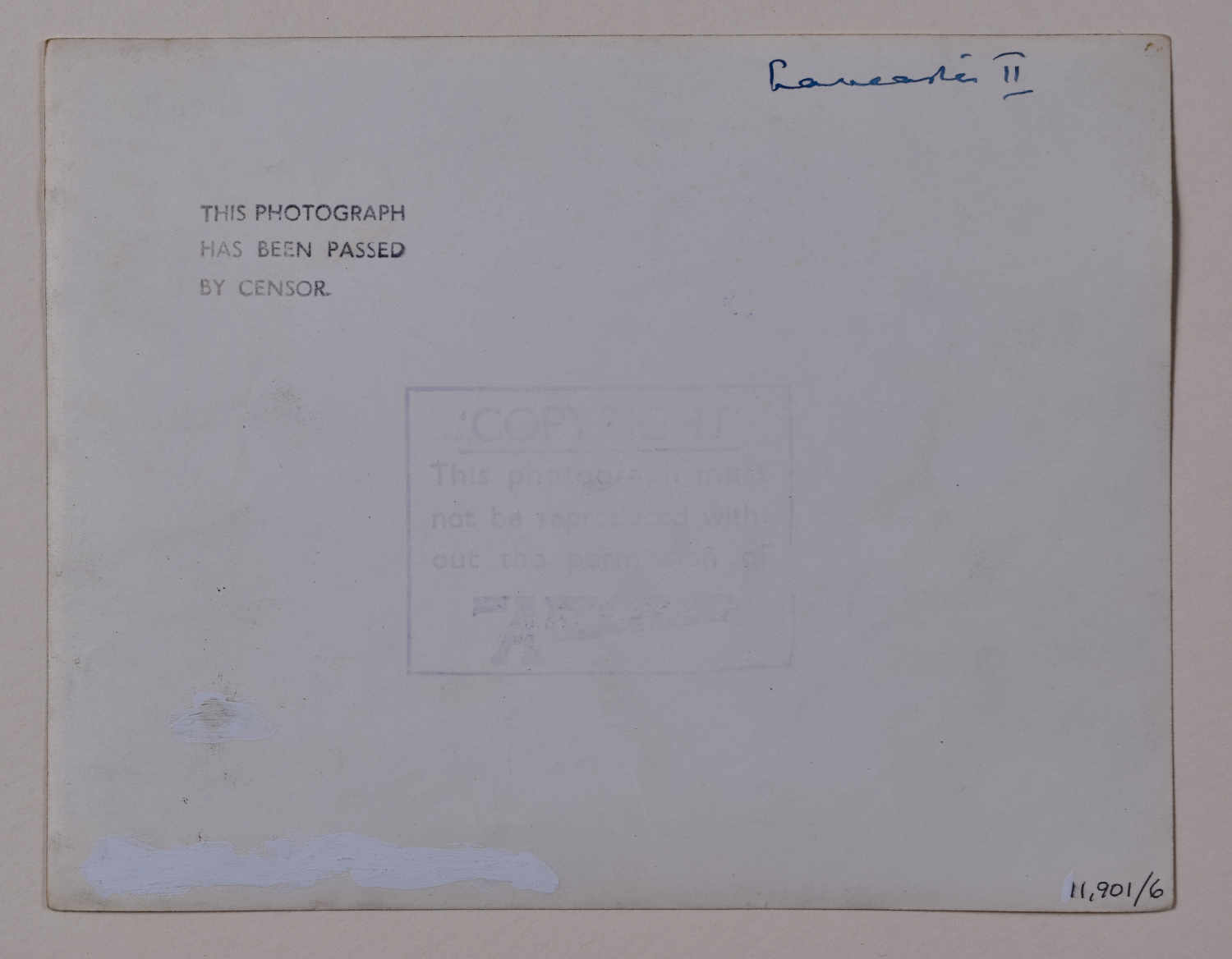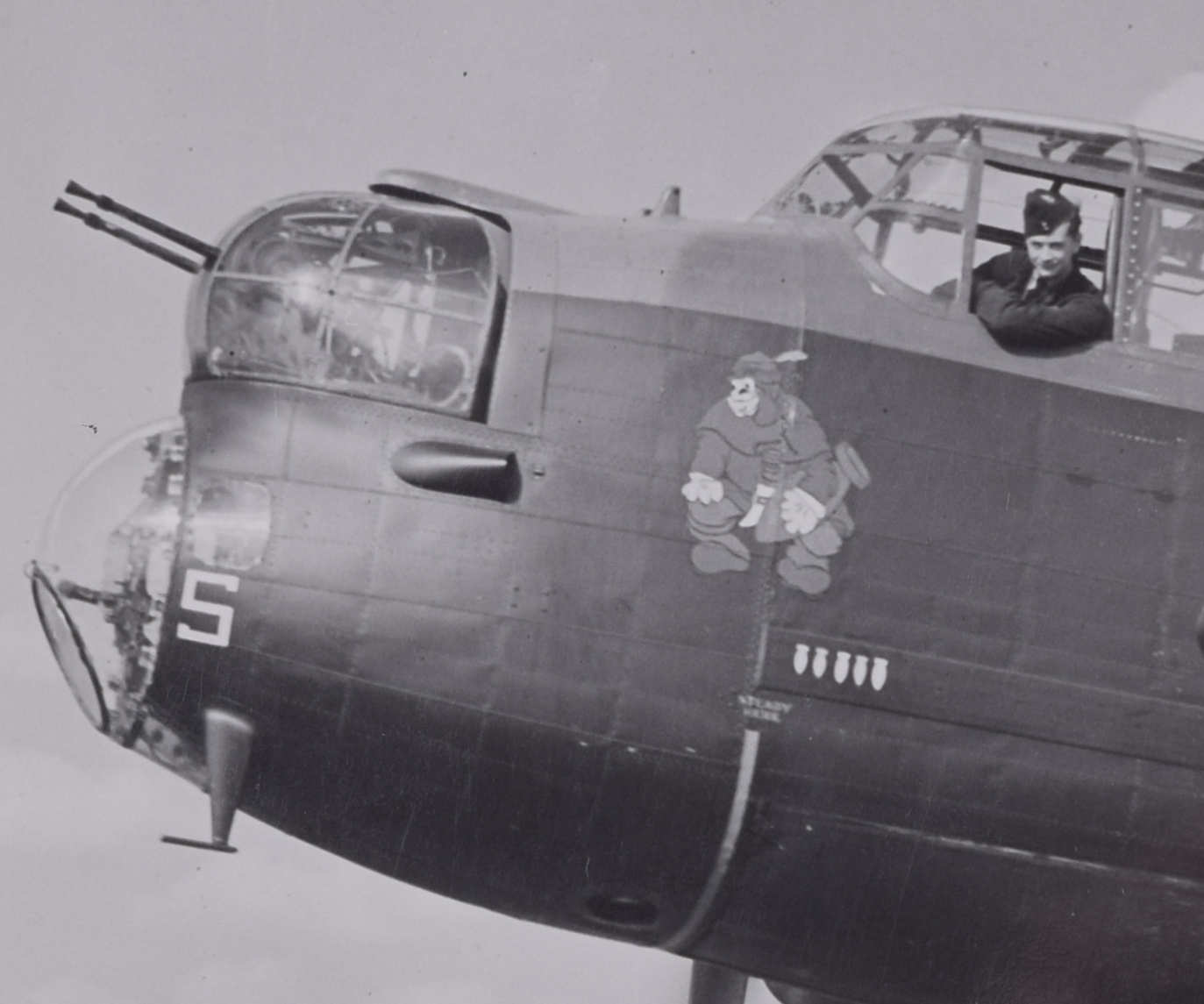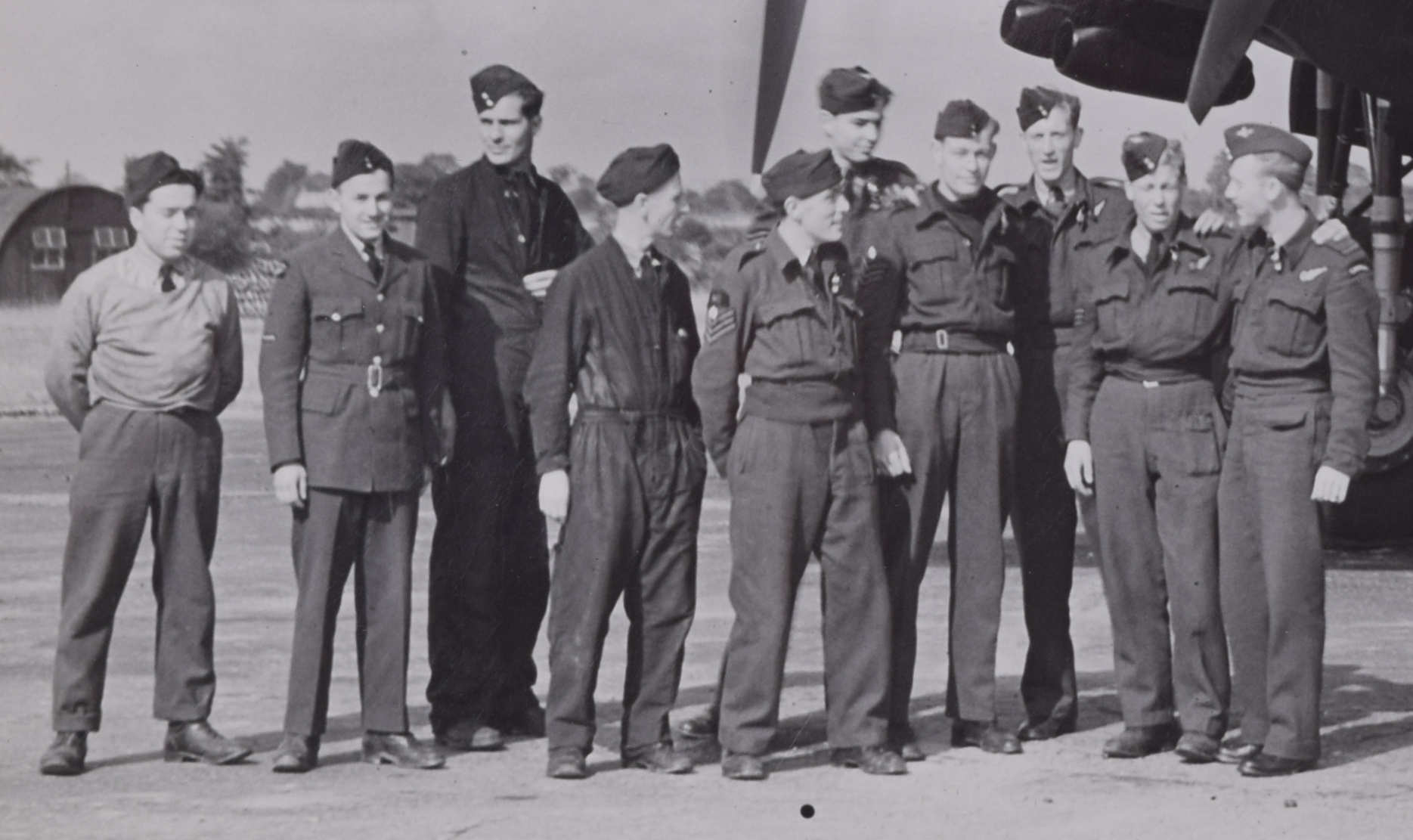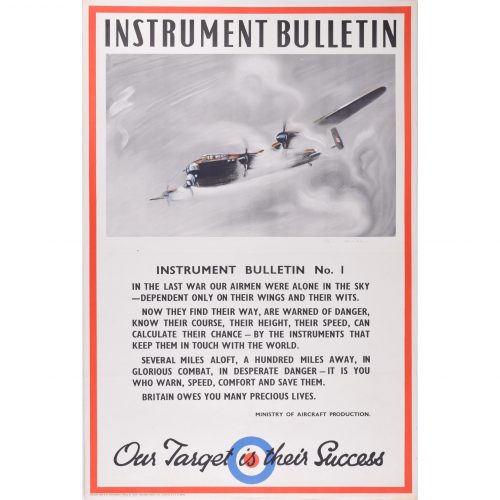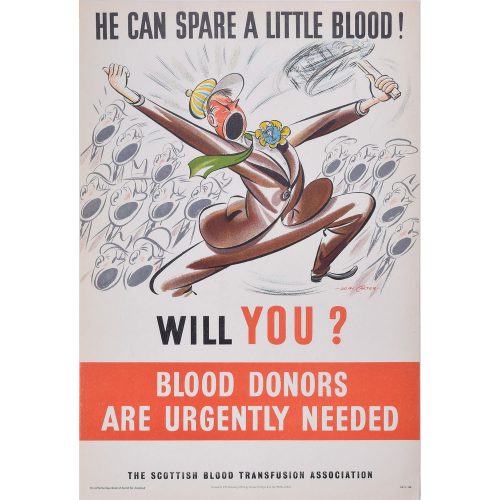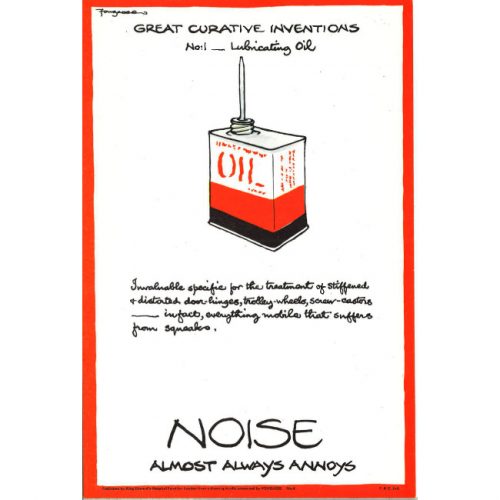Lancaster Bomber with Crew
Original silver gelatin photograph c. 1943
16 x 21 cm
Stamped to reverse ‘This Photograph has been Passed by Censor’ and ‘Copyright Aeroplane [Magazine]’
A photograph of the ground- and air-crew of DS689. The engine fitter second from left is Samuel Greisman. That the aeroplane has five operations marked on its nose suggests a date of late August or early September for the photograph. This photograph was published in ‘Jews in Uniform’ by Michael Greisman, published by Aster Publishing.
DS689 OW-S (identified from this photograph on account of the nose art) served with 426 (Thunderbird) Squadron RCAF, based in Linton-on-Ouse (north of York). The Thunderbird featured inthe squadron crest is a North American native symbol signifying disaster and death to anybody who perceives it. The squadron converted to the Hercules-powered Lancaster II on 17 August 1943. Lancaster IIs were fitted with radial Bristol Hercules engines as it was feared there might be a shortage of Rolls-Royce Merlin engines. This particular aircraft was also able to carry ‘cookies’ with its extended bomb bay.
DS689 was shot down by night-fighter on 8 October 1943 – prior to the date of publication of this photograph – near Rachecourt-sur-Blaise. It was on a 323-bomber mission to bomb Stuttgart in Germany, piloted by P/OMB Summers and equipped with the Airborne Cigar jamming system (ABC for short). This was the first operation using the ABC(3) jamming system, and only a small number of aircraft was lost on this raid. ABC jammed the airways and made night-fighter communications almost impossible. The Germans referred to is as ‘dudelsack’ (bagpipes) owing to the warbling sound. No 101 Squadron was the prime operator of this equipment and as a consequence of not maintaining radio silence suffered very high losses during the war; moreover its aircraft were on almost every bombing raid. A German-speaking operator identified the channels the night fighter operators were using and loud noise was played on that channel.
Stuttgart was cloud covered and severe fog set in later, so bombs were dropped over a scattered area, destroying 344 houses and damaging a further 4,568. On its home run DS689 was intercepted by Oblt. Ferdinland Christiner from 5./NJG4at 3,800m and shot down (Christiner himself was shot down on 5/6 July 1944). Two crew members bailed out, the rest of the crew died in the crash and are buried in the local churchyard, click here to see photographs. The funeral was attended by the whole village and residents of the surrounding countryside and La Marsellaise was sung – to the annoyance of the Germans. The funeral was recorded by a photographer (click here)
Condition: generally good.
Provenance: from the collection of Philip J R Moyes, author of many books on the RAF, most notably The Pictorial History which ran to several volumes.

